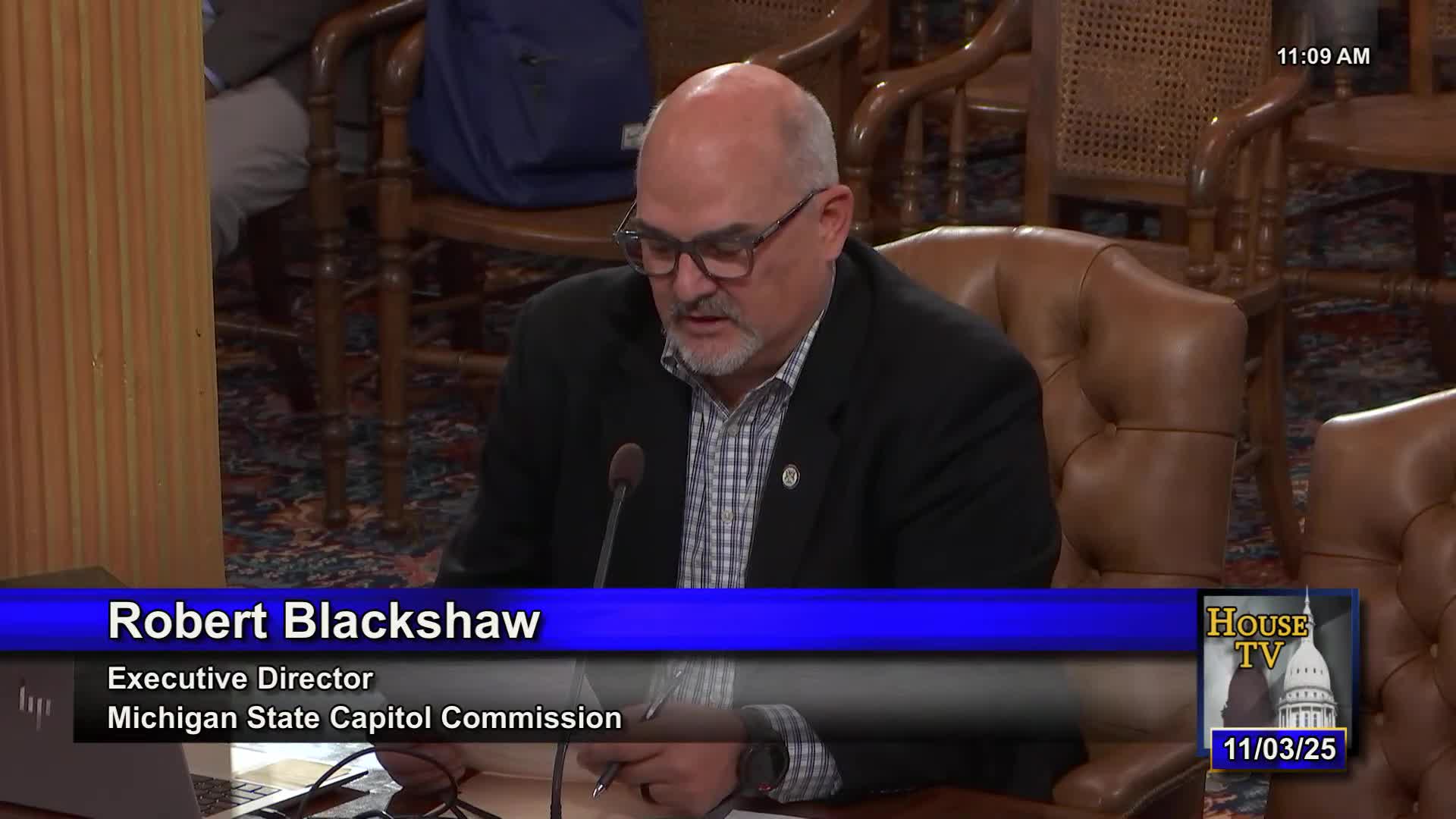Capitol staff to pilot Airspace Link drone-detection system; three-phase strategy outlined
November 04, 2025 | 2025 House Legislature MI, Michigan
This article was created by AI summarizing key points discussed. AI makes mistakes, so for full details and context, please refer to the video of the full meeting. Please report any errors so we can fix them. Report an error »

Executive Director Rob told the Michigan State Capitol Commission on Nov. 3 that the commission will begin a proof-of-concept installation of an Airspace Link drone-detection system around Capitol Square and outlined a three-phase security approach: detection, mitigation and enforcement.
Rob described the detection phase as installing software and hardware to “light the sky up like air traffic control,” allowing staff to see drone flights within a designated radius, compare those flights to Federal Aviation Administration (FAA) registered flight plans and, where possible, identify the drone pilot’s location. He said the commission will conduct a demonstration once the system is in place and will invite commissioners to view the system.
Rob said he has been in contact with the Michigan Drone Association (named contacts: Matt Rybar and Graham Filler), Michigan State Police and Airspace Link, and that Representative Bill Brock is preparing a package of bills to address drone-related policies, including potentially listing the Capitol as critical infrastructure. Rob cautioned that technology is moving faster than policy and that the commission will proceed deliberately.
On the later phases, Rob described mitigation as communication and policy work—informing stakeholders how to request permission to fly on Capitol Square and establishing procedures for authorized flights. The enforcement phase would rely on laws and on-the-ground response, including Michigan State Police enforcement of any future regulations or statutory requirements.
Rob emphasized a staged approach and said, “I will not move into any of the other phases until I have a better understanding of where we're going. And I won't do anything unless I have the permission of the commission prior to that as well.” No formal vote or regulatory action was taken at the Nov. 3 meeting; the statement was presented as an operational plan and a forthcoming demonstration was promised.
The commission did not adopt new rules at the meeting; Rob said he will continue stakeholder engagement and report back after the proof-of-concept demonstration.
Rob described the detection phase as installing software and hardware to “light the sky up like air traffic control,” allowing staff to see drone flights within a designated radius, compare those flights to Federal Aviation Administration (FAA) registered flight plans and, where possible, identify the drone pilot’s location. He said the commission will conduct a demonstration once the system is in place and will invite commissioners to view the system.
Rob said he has been in contact with the Michigan Drone Association (named contacts: Matt Rybar and Graham Filler), Michigan State Police and Airspace Link, and that Representative Bill Brock is preparing a package of bills to address drone-related policies, including potentially listing the Capitol as critical infrastructure. Rob cautioned that technology is moving faster than policy and that the commission will proceed deliberately.
On the later phases, Rob described mitigation as communication and policy work—informing stakeholders how to request permission to fly on Capitol Square and establishing procedures for authorized flights. The enforcement phase would rely on laws and on-the-ground response, including Michigan State Police enforcement of any future regulations or statutory requirements.
Rob emphasized a staged approach and said, “I will not move into any of the other phases until I have a better understanding of where we're going. And I won't do anything unless I have the permission of the commission prior to that as well.” No formal vote or regulatory action was taken at the Nov. 3 meeting; the statement was presented as an operational plan and a forthcoming demonstration was promised.
The commission did not adopt new rules at the meeting; Rob said he will continue stakeholder engagement and report back after the proof-of-concept demonstration.
View full meeting
This article is based on a recent meeting—watch the full video and explore the complete transcript for deeper insights into the discussion.
View full meeting
